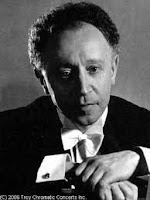 I once gave a lecture-demonstration to a group of piano teachers. When I asked for a show of hands in response to the question, "How many of you use forearm rotation," no one responded. Admittedly, it was sort of a trick question because not everyone is familiar with the terminology. But it's a good starting point for this topic. It is, in fact, not possible to play the piano without using forearm rotation.
I once gave a lecture-demonstration to a group of piano teachers. When I asked for a show of hands in response to the question, "How many of you use forearm rotation," no one responded. Admittedly, it was sort of a trick question because not everyone is familiar with the terminology. But it's a good starting point for this topic. It is, in fact, not possible to play the piano without using forearm rotation.If you you don't believe me, try raising your arm up to the keyboard. No, raise it straight up. Your forearm and hand will be in a karate-chop position. In order to place the hand on the keys in a playing position, it is necessary to rotate the hand in the direction of the thumb. Playing up and down the keyboard requires constant rotation toward the thumb. But this is only a starting point.
One clear example of rotation in music is the so-called Alberti figure, in which the music changes direction with each note. In this example it is called single rotation; when moving both to a given note, in a scale for example, and away from it to the succeeding note, it is called double rotation, except the thumb-crossing. Change of direction is always a single rotation and this concept is uniquely important in facilitating passage work. The nomenclature is not important, though a thorough understanding of the application of this underlying tool is essential to a well-coordinated and efficient technique.
 This video of Edna Golandsky gives a very nice introduction to the principle. I highly recommend these videos for the serious pianist.
This video of Edna Golandsky gives a very nice introduction to the principle. I highly recommend these videos for the serious pianist.Golandsky Demonstrates Rotation in a Scale



